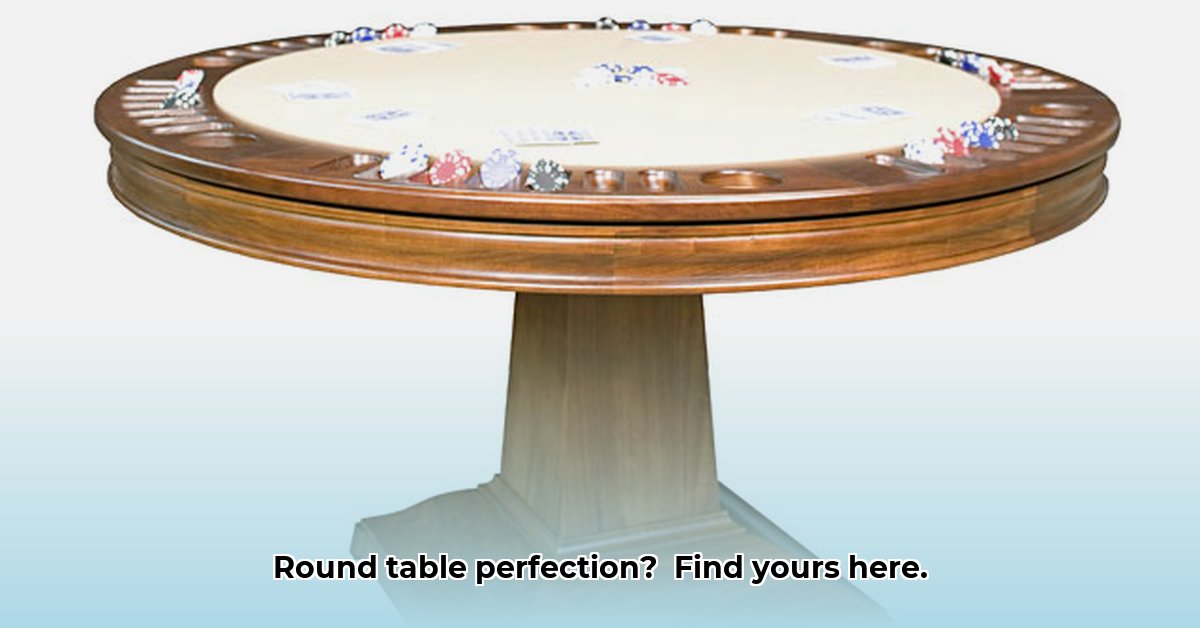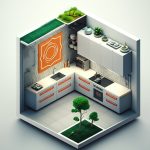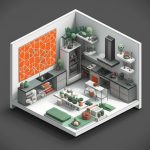Choosing the perfect round game table can be exciting, but with so many options, it’s easy to feel lost. This comprehensive guide simplifies the process, helping you discover the ideal table that complements your space, gaming style, and budget. From understanding materials to optimizing for seating and style, we’ll cover everything you need to know. For smaller spaces, consider these round tables for four. Get ready to enhance your game nights!
Your 2026 Round Game Table Handbook
Selecting a round game table involves more than just aesthetics. It’s about finding a balance between functionality, durability, and style. This guide is designed to navigate you through the essential elements, ensuring you make an informed decision. We’ll explore material types, size considerations, style options, and space-saving designs. Let’s begin your journey to the perfect game table!
Decoding Materials: Wood, Laminate, or Plastic?
The material of your game table is a cornerstone of its long-term performance and visual appeal. Here’s a detailed look at the common choices:
Solid Wood:
* Advantages: Solid wood offers unparalleled beauty and a sense of luxury. Known for its robustness, a properly maintained solid wood table can last for generations, becoming a cherished family heirloom. Its natural grain and warm textures add character to any room.
* Disadvantages: The premium quality of solid wood comes with a higher cost. These tables demand consistent care, including regular polishing and occasional refinishing. Their substantial weight also makes them less portable.
Laminate (Manufactured Wood):
* Advantages: Laminate provides an excellent balance of affordability and style. It mimics the look of real wood at a fraction of the price and is available in a vast spectrum of finishes and colors, making it adaptable to diverse interior designs. Maintenance is straightforward, typically requiring just a wipe-down.
* Disadvantages: While durable, laminate is less resistant to scratches and dents compared to solid wood. Its lifespan may be shorter, and it lacks the unique character and potential for value appreciation found in solid wood.
Plastic:
* Advantages: Plastic tables are the most budget-conscious choice, offering exceptional ease of cleaning and lightweight portability. Many designs are foldable, making them ideal for temporary setups or spaces with limited storage.
* Disadvantages: Plastic tables generally lack the aesthetic sophistication and sturdiness of wood alternatives. They might not be suitable for frequent, heavy-duty use, and certain plastics can fade or warp when exposed to prolonged sunlight.
| Material | Advantages | Disadvantages |
|---|---|---|
| Solid Wood | Enduring beauty, exceptional durability, increased value over time, classic appeal | Higher price, requires regular maintenance, substantial weight |
| Laminate | Cost-effective, versatile finishes, easy to clean | Less durable than solid wood, limited lifespan, susceptible to moisture damage |
| Plastic | Budget-friendly, lightweight, easy to clean, foldable options | Lower aesthetic appeal, less durable, potential for sun damage |
The optimal material hinges on your budget, desired aesthetic, and expected usage frequency.
Measuring Up: Size, Seating, and Spatial Harmony
The dimensions of your game table directly influence comfort during play. Consider these factors to ensure a perfect fit:
- Player Count: A 36-inch diameter table comfortably seats four for casual card games. For larger board games or poker nights, a 48-inch or larger table is recommended.
- Personal Space: Each player should have enough room to move freely and reach across the table. Allocate at least 24-30 inches per person for a relaxed setting and 30-36 inches for a more formal gaming experience.
- Room Assessment: Consider the overall dimensions of your room. You’ll need ample space around the table for chairs and easy movement. Prioritize measuring your available area before making a choice.
Tailor the table size to the games you play most often. A smaller table works well for card games, while larger board games necessitate a larger surface.
Defining Your Style: Matching Décor and Personal Taste
Your game table should reflect your individual style and blend seamlessly with your existing décor.
Traditional Styles: Characterized by rich wood tones, elaborate detailing, and a formal presence. Ideal for creating a classic and timeless atmosphere.
Modern Styles: Feature sleek lines, minimalist designs, and incorporate materials like metal or glass. Perfect for contemporary and mid-century modern interiors.
Rustic Styles: Showcase natural materials, distressed finishes, and an organic aesthetic. These tables add warmth and character to farmhouse or nature-inspired spaces.
Select a table style that complements your current décor. A modern table might clash in a rustic setting, and vice versa.
Budget Allocation: Maximizing Value
The price of round game tables can vary widely depending on the materials, size, and design.
- Entry-Level (Under $300): Primarily plastic or laminate tables. Suitable for casual gamers or those with budget constraints. Foldable designs are readily available.
- Mid-Range ($300-$1000): A broader selection of solid wood tables, offering a mix of durability, style, and value. Greater variety in sizes and finishes.
- Premium (Over $1000): High-quality solid wood tables (e.g., cherry, walnut), intricate craftsmanship, and lasting durability. Expect exquisite details and superior materials.
Prioritize the features that matter most to you and allocate your budget accordingly.
Space-Saving Solutions: Multi-Purpose Designs
Round game tables are evolving to serve multiple purposes. Many feature folding mechanisms for easy storage, while others include removable leaves to adjust the table size. These adaptable designs are perfect for smaller living spaces. Some models can seamlessly transition from a game table to a dining surface.
Recommended Options (Curated Examples)
Specific product recommendations are not provided due to market fluctuations; however, here are examples of what to consider at different price points:
- Budget-Conscious: Opt for durable, lightweight, folding plastic tables with easy storage and a simple design.
- Mid-Range: Seek well-constructed solid wood tables with a classic design, sturdy joints, and a smooth finish.
- High-End: Invest in premium hardwood tables with exceptional craftsmanship and unique design elements. These tables should be both functional and visually striking.
Pre-Purchase Checklist: Essential Considerations
Before making a purchase, consider the following:
- Material: Assess the desired level of durability and maintenance.
- Size: Ensure the table comfortably seats the desired number of players and fits your space.
- Style: Choose a style that complements your home décor.
- Budget: Set a realistic budget and adhere to it.
- Multi-functionality: Determine if you need a table that serves multiple purposes.
Purchasing a round game table is an investment in entertainment and your home. By carefully considering these factors, you can select the perfect table to enhance your gaming experience and complement your personal style.
Finding the Right Game Table Dimensions for Your Room and Activities
Key Insights:
* The perfect round game table depends on your room size, the games you enjoy, your spending limit, and your personal style.
* Material selection impacts long-term durability, cost, and required maintenance.
* Proper sizing maximizes gameplay comfort for all participants.
* Aesthetic choices should complement existing home decor.
* Your specified budget will determine materials and included features.
* Versatile, multi-functional tables maximize available space while maximizing overall function.
Selecting The Right Gaming Table Material
Picking the right material is a crucial step in finding the right game table dimensions for your room and activities. Your choice impacts everything from durability to maintenance. Let’s dive into the popular options:
- Solid Wood: Think timeless elegance. Solid wood tables are incredibly durable and beautiful, but they’re also the priciest. They require regular maintenance – occasional polishing and potential refinishing – but they age gracefully.
- Laminate: A solid middle ground exists. Laminate offers a budget-friendly alternative while still providing a good look. These tables are generally less durable than solid wood, however, and susceptible to damage from moisture.
- Plastic: Plastic game tables are the most affordable and often the easiest to maintain. They’re lightweight and portable, perfect for casual play or smaller spaces. However, they generally lack the aesthetic appeal of wood and might not stand up to heavy use.
Sizing Up Your Space and Game Needs
Don’t just focus on the table’s surface area; consider the space around it. You need elbow room! Think about this:
- Casual Games: A smaller 4
- Ceramic Kitchen Wall Tiles: Style and Protection for Your Walls - December 17, 2025
- Kitchen tiling wall: Elevate your kitchen with stylish wall tiles - December 16, 2025
- Gray Kitchen Backsplash Tile: Ideas for a Stylish Upgrade - December 14, 2025









